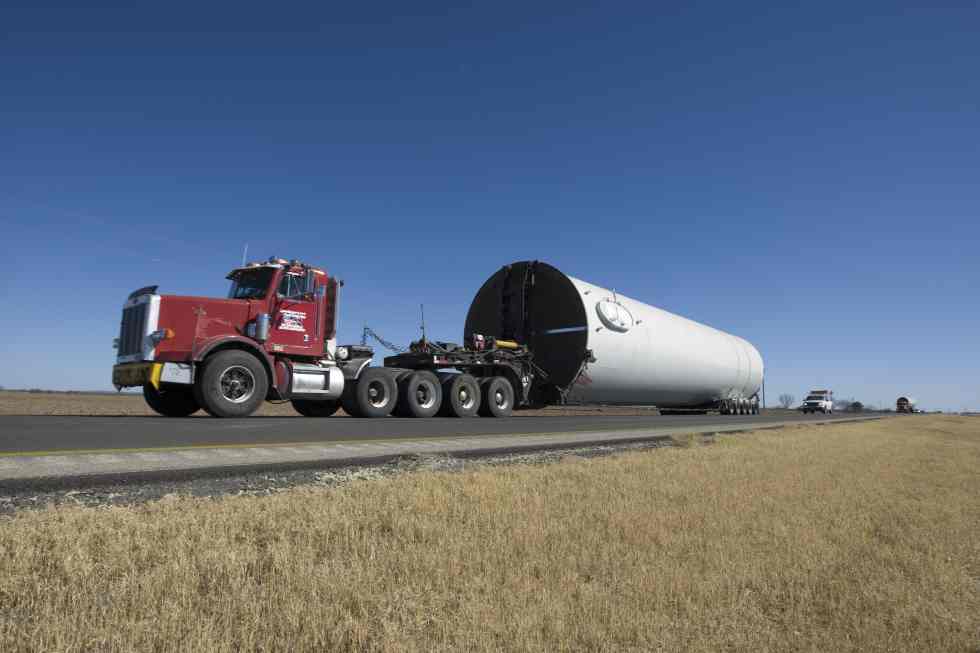A trucking firm based mostly in Fort Value, northern Texas, is providing to pay skilled drivers $14,000 every week—$728,000 a 12 months—because the U.S. grapples with a nationwide scarcity of truckers.
Sisu Vitality, which describes itself as a “cutting-edge trucking firm,” says candidates have to be over 25, with no less than two years of expertise, and should have a industrial driver’s license.
Jim Grundy, CEO of Sisu Vitality, informed Texas TV station KENS 5: “Insurance coverage corporations will not insure you in case you’re not 25 years outdated, if you do not have two years of expertise. So, as a brand new driver popping out, these alternatives aren’t accessible to you.”
Talking to Newsweek, a spokesperson for the corporate defined Grundy is “hiring owner-operators of vans, not simply truck drivers like firm truck drivers.
“They should personal the truck, and he [Grundy] helps them within the strategy of buying a truck and to get their license,” the spokesperson stated.
The corporate’s director of recruiting additionally informed Newsweek: “We’re frac sand haulers within the oilfield in West Texas. $14,000 is what our highest earners make based mostly on the quantity of a great deal of sand they run.”
The U.S. has had a truck driver scarcity for greater than 15 years, in keeping with the American Trucking Associations.
A shortfall was first reported in 2005, when it stood at about 20,000, the ATA stated. This quantity had “skyrocketed” to round 50,700 by 2017.
The next 12 months the trade reported a good higher scarcity, “largely resulting from strong trade freight volumes.”
There are a number of causes for the scarcity “however one of many largest elements is the comparatively excessive common age of the present workforce,” stated the ATA.
The issue has been exacerbated by the COVID-19 pandemic, which led to the “momentary closures of state DMVs and truck driver coaching colleges [and] dried up the already fragile pipeline of latest drivers getting into the trucking trade,” in keeping with a letter despatched to Congress by 117 organizations representing the U.S. provide chain.
“On account of the already crippling driver scarcity, corporations in provide chains throughout the economic system are going through larger transportation prices, resulting in elevated costs for shoppers on the whole lot from electronics to meals,” the April 14 letter stated.
The letter urged lawmakers to cross the DRIVE-Protected Act, which has had robust bipartisan assist.
The laws goals to “treatment the nation’s rising scarcity of truck drivers by selling alternative and enhancing security coaching for rising members of the trucking workforce,” in keeping with the ATA.
The motive force shortages are anticipated to final past this summer season, Grundy stated. “That is the narrative that you simply’re listening to,” he informed KENS 5. “That this factor goes to final wherever from two to 4 years. And it might be longer as a result of the inhabitants’s getting stronger.”
Based on the letter despatched to Congress, 70 p.c of the nation’s freight is transported by industrial vans and the trade is estimated to require an “further 60,800 truck drivers instantly—a deficit that’s anticipated to develop to greater than 160,000 by 2028.”
The trucking trade is forecast to want round 1.1 million new drivers over the subsequent decade, to deal with elevated demand from clients and to switch retiring staff.
ATA’s chief economist, Bob Costello, stated in late March: “With the influence of not too long ago handed fiscal stimulus, and the quickening tempo of vaccinations within the U.S., we’re prone to see continued enchancment within the economic system which is able to drive not simply more healthy freight volumes, however are prone to create much more demand for drivers, tightening the market, so motor carriers want to stay centered on driver retention.
“Whereas the driving force scarcity quickly eased barely in 2020 throughout the depths of the pandemic, continued tightness within the driver market stays an operational problem for motor carriers and they need to count on it to proceed by 2021 and past.”
This text has been up to date with remark from Sisu Vitality.











Leave a Reply